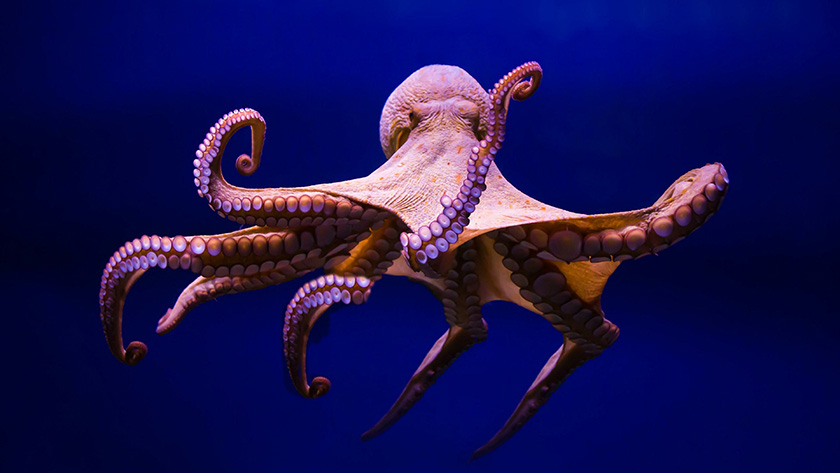More news
- Focus on the global coatings market: Global coatings market outlook
- View from the UK: Navigating chemical policy and sustainability
- Focus on adhesives: Unveiling unbreakable bonds – Testing redefines physical strengt...
- Focus on adhesives: Henkel and Covestro collaborate for sustainability of engineered wood ...
- Advances in construction chemical technology: What’s new in 2024?

Nanoclay has proven to be an active anti-corrosive additive due to the self-repairing effect from nanoclay swelling and expansion, except for its passive barrier effect due to the high aspect ratio. But it is still uncertain how these effects of nanoclay are intertwined with the other components in a complex coating system in corrosive environments. In this study, we examined the combined effects of nanoclays of two particle sizes with a commonly used cost-reducing filler, BaSO4.
By employing neutral salt spray tests, electrochemical analysis and surface characterisation, we identified the optimal conditions for achieving a strong barrier effect. Surprisingly, a relatively low nanoclay dosage of 2% combined with BaSO4 filler exhibited synergistic behaviour. Nanoclay not only compensated for the reduction in the barrier effect owing to the addition of BaSO4 by offering self-repairing and barrier effects, but also overcame the delamination issues observed at higher nanoclay dosages (4% and above).
The coating panel with 2% larger nanoclay and BaSO4 showed two orders of magnitude higher pore resistance than the coating without nanoclay, remaining at 107 Ω∙cm2 after 25 days of immersion. As a result, this coating panel demonstrated significantly slower corrosion expansion and reached a lifetime of 2500hr when creepage exceeded 2mm in salt spray tests. This study contributes to a full understanding and proper utilisation of nanoclay for high-performance, smart anti-corrosive coatings.
Anti-corrosive coatings are crucial in protecting metallic materials, making them economically and technically significant. Extensive research efforts have been devoted to understanding their protection mechanisms and enhancing their performance [1,2]. The corrosion process on uncoated or exposed steel substrates involves an electrochemical reaction, leading to material deterioration. Effective coatings with good substrate adhesion serve as dense and compact barriers, reducing the permeability of aggressive ions such as Cl−, oxygen and water, to the substrate. Such coatings can separate the anodic and cathodic regions, inhibit the cathodic half-reaction, and alleviate the burden of higher pH values that could degrade the coating binder [3,4]. Inadequate wet adhesion can also lead to coating delamination due to changes in internal stresses caused by water [5,6].
We have evaluated the performance of two commercially available montmorillonite-based nanoclays, Claytone®HT (C1) and CLOISITE® 30B (C2), as anti-corrosive additives in the polyester/triglycidyl isocyanurate (TGIC) clearcoat powder coating system [7]. Both clays have a layered structure and a high aspect ratio, which can increase the tortuosity of coating films, decrease the permeability, and slow down the electrolyte ingress when the coating is exposed to a corrosive environment [8,9]. Optimal dosages for each additive were determined through systematic incorporation into the coating binder, followed by evaluation using applicable ASTM standards, electrochemical measurements, and surface and structure characterisation. The nanoclay with a larger particle size exhibited more superior barrier properties and self-repairing capabilities in the neutral salt spray and electrochemical tests than the smaller one [7].
READ MORE:
A bio-based alternative to TiO2: Finnish startup company focuses on birch bark
In coating formulations, fillers or extenders are common additives alongside resin, curing agents, pigments and other components [10,11]. Fillers contribute to reduced material costs and enhanced mechanical strength [3,12,13,14]. While talc and barium sulphate are known fillers for coatings, their combined use with other additives, such as montmorillonite, has demonstrated enhanced anti-corrosive performance [3,15,16,17,18]. When used alone in polyester/TGIC powder coatings, barium sulphate does not exhibit a barrier effect. Still, it can reduce the required dosage of zinc phosphate as an anti-corrosive pigment [15]. Moreover, montmorillonite has been shown to function as a dispersion aid for other polymer components [19].
Formulating coatings with multiple types of solid particles, including pigments, additives and fillers, is common in research and industrial practices [20,21]. Such combinations are typically evaluated experimentally due to the complexity of interactions between the components. Studies on the combined effects are rare in the literature, and one of the objectives of this study is to explore this topic in volatile organic compound (VOC)-free powder coatings by electrochemical techniques.
This study further explores the incorporation of barium sulphate filler and the two nanoclays to reduce the cost of polyester/TGIC powder coatings. The corrosion resistance of the new coatings is investigated with electrochemical techniques in electrolyte immersion and neutral salt spray tests in salt fog. The mechanical performance and surface quality of coatings are crucial for industrial applications and they are affected by the incorporation of additives and fillers. These properties need to be assessed and compared with the original coatings.
To view the full details about the materials, results and discussions in this study, click here.
Conclusions
This study explored the incorporation of two nanoclays of different particle sizes into a UV-resistant polyester/TGIC powder coating system to enhance its anti-corrosive properties. Electrochemical and neutral salt spray tests were conducted to compare the performance of the coatings.
The findings revealed that BaSO4 can effectively decrease coating cost, but will inevitably decrease the barrier effect. A relatively low amount of 2% nanoclay can compensate for the reduction in the barrier effect by offering self-repairing and passive barrier effects and overcoming the delamination issues observed at higher nanoclay dosages (4% and above).
The coating panel with 2% larger nanoclay and BaSO4 showed 2 orders of magnitude higher pore resistance than the coating without nanoclay, remaining 107 Ω∙cm2 after 25 days of immersion due to improved dispersion with the aid of the filler.
As a result, this coating panel demonstrated significantly slow corrosion expansion and reached a lifetime of 2500hr when creepage exceeded 2mm in salt fog tests. This study contributes to a better understanding the interaction between nanoclay and fillers in high-performance smart anti-corrosive coatings. It offers insights for formulating coatings suitable for different application scenarios.







